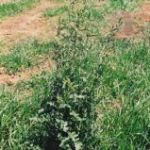| Common Name: |
English Watercress |
| Other Names: |
Bank Cress, Bank Mustard, Hedge Mustard, Singer's Plant. |
| Botanical Name: |
Sisymbrium officinale syn. Erysimum officinale |
| Genus: |
Sisymbrium |
| Family: |
Brassicaceae |
| Native Location: |
Europe, N Africa, and the Near East. |
| Cultivation: |
Moist to dry, acid to alkaline soil in sun or light shade. Self-sows readily. |
| Propagation: |
By seed sown in autumn or spring. |
| Harvest: |
Plants and flowering tops are cut in summer for infusions and liquid extracts. Leaves are picked in spring and used fresh. |
| Height: |
30-90cm (12-36in) |
| Width: |
15-60cm (6-24in) |
| Hardiness: |
Hardy |
| Parts Used: |
Whole plant, leaves, flowering tops. |
| Properties: |
A tonic herb with a mustard-like aroma. It has laxative, diuretic, and expectorant effects, and benefits the digestion. |
| Medicinal Uses: |
Internally for bronchitis, pharyngitis, coughs, laryngitis, and bronchial mucus.
To treat laryngitis, pharyngitis, loss of voice, severe hoarseness, chronic bronchitis, and gallbladder inflammation. |
| Typical Dose: |
A typical daily dose of hedge mustard in herb form may range from 0.5 to 1.0 gm, or the same amount can be made into an infusion (producing three to four cups of tea). |
| Possible Side Effects: |
Hedge mustard's side effects include vomiting, diarrhea, headache and irregular heartbeat. Hedge mustard contains cardiac glycosides, which can help control irregular heartbeat, reduce the backup of blood and fluid in the body, and increase blood flow through the kidneys, helping to excrete sodium and relieve swelling in body tissues. However, a buildup of cardiac glycosides can occur, especially when the herb is combined with certain medications or other herbs that contain cardiac glycosides, causing arrhythmias, abnormally slow heartbeat, heart failure, and even death. |
| Drug Interactions: |
| Taking hedge mustard with this drug may be harmful: |
| Digitalis, (Digitek, Lanoxin)—May increase therapeutic and/or adverse effects of the drug. |
|
| Supplement Interactions: |
- Increased risk of cardiac glycoside toxicity when used with other herbs the contain cardiac glycosides, such as Black Hellebore, Calotropis, Motherwort, and others.
- Increased risk of cardiotoxicity due to potassium depletion when taken with cardioactive herbs, such as Adonis, Digitalis, Lily of the Valley, and Squill.
- Increased risk of potassium depletion when used in conjunction with Horsetail Plant or Licorice.
- Increased risk of potassium depletion when used with stimulant laxative herbs, such as Black Root, Cascara Sagrada, Castor Oil, and Senna.
|
| Culinary Uses: |
Young leaves can be added to salads, soups, sauces and omelets. |
| Warning: |
Excess may effect the heart. |
| Bibliography: |
Encyclopedia of Herbs by Deni Brown Copyright © 1995, 2001 Dorling Kindersley Limited Pg 370
The Essential Herb-Drug-Vitamin Interaction Guide by Geo. T. Grossberg,MD and Barry Fox,PhD Copyright©2007 Barry Fox,PhD. Pp.268-269 |

